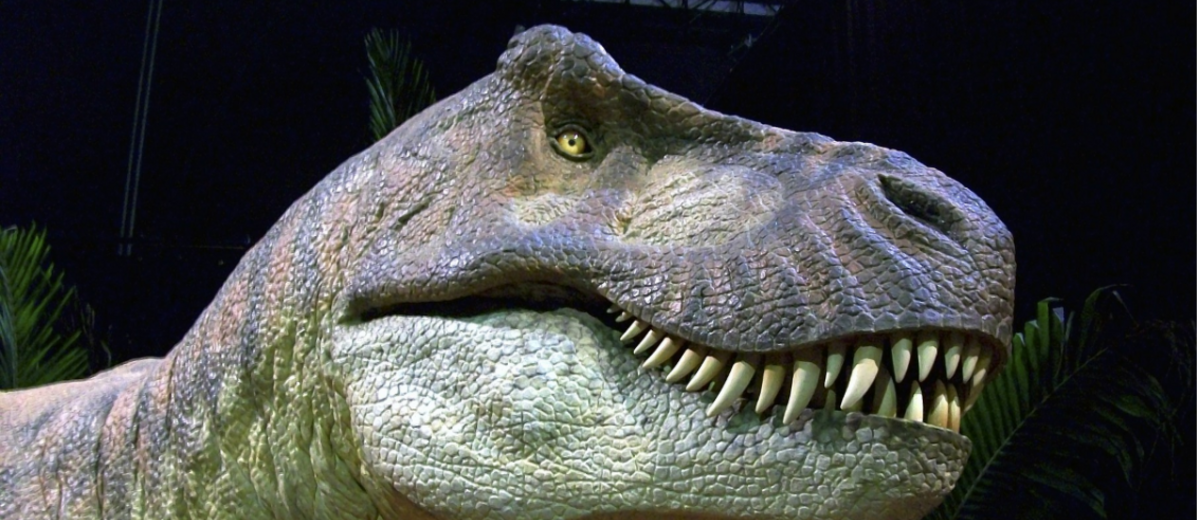
Animatronics involves the creation of animatronic figures; these are electronically, mechanically or pneumatically driven figures that are commonly designed to resemble real creatures. The field of animatronics combines such disciplines as robotics, electronics and mechatronics as well as anatomy, and displays parallels to traditional puppetry, particularly in its forms of control. Although the attendant technology has a long history, it can still be encountered in many forms of entertainment. Developments are progressing partly as a result of the close association with robotics.
The basis of an animatronic figure is generally a mechanical endoskeleton. This is a support structure that serves first and foremost to protect the technical components contained inside it. The endoskeleton is frequently made of aluminium, steel, plastic or wood, and its form as far as possible resembles the actual skeleton of the corresponding figure. Technical elements such as joints, motors and actuators are interlinked by cables, wires and the necessary power lines, while the technical structure can be compared with the muscles and nervous systems of actual creatures. The endoskeleton also functions as a support structure for the external covering of the animatronic figure. Made from latex, silicone or other similar material, the covering can be equipped with a costume where required, to give the figure an optimum appearance. The goal is to make the animatronic figure look as lifelike as possible. For this purpose, regular use is made of artificial fur, feathers and makeup.
When giving form to animatronic figures and fitting the technical components, it is important to pay attention to their movement ability. Depending on the type of figure and its ultimate place of application, it might only need to be able to move its head or arms, or the whole figure may need to be movable. Modern techniques can be employed to create a wide range of complex facial expressions as well as motions such as walking and running. Of decisive importance for the movements of animatronic figures is the use of servo drives such as the FHA-C and FHA-C Mini from Harmonic Drive SE. With the aid of the integrated servomotor combined with a component set from the CSD or HFUC series and a specially constructed output bearing, the above servo drives enable simple and space-saving constructions. On top of this, they also fulfil the requirements of dynamics, movement range and motion precision.
Modern animatronic figures are controlled by software or computer, although a distinction is made as to whether certain movements are realised by a one-time programming procedure or whether the figure is controlled in real time. In the latter case, it only follows fixed movement sequences to a limited extent. With the first variant, it is possible to define particular soundtracks, noises or sound effects during programming. In the playback phase, the soundtrack is synchronised with the movement of the animatronic figure. The choice of controller - static programming or remote control - is based primarily on the intended use of the figure.
The main areas of application for animatronics are in the entertainment industry. Particularly prominent examples can be found in many amusement and theme parks, while animatronic figures are also frequently seen in the film industry. Since the introduction of CGI graphics and similar special effect software, the use of animatronic figures in the film industry has decreased, however. On the other hand, CGI graphics cannot be transferred into reality and are therefore restricted on-screen. In contrast, animatronics shows great potential for a wide range of events. Advances in the field of robotics and artificial intelligence have made animatronic figures popular sources of entertainment at sports and other live events, as well as street festivals, exhibitions, and trade fairs.
Virtually every aspect of animatronics has benefited from the technical advances made in recent years. These include more powerful servo motors, employed in conjunction with more complex software and breakthroughs in chemistry, such as developments in the field of silicone. While all of these innovations have brought about a fundamental improvement to animatronics figures, they have also strengthened competing technologies such as CGI and VR, which have for a considerable time been enjoying great popularity in the film industry. Significant expectations placed on animatronics for this reason. Outside the film industry, the use of animatronics figures is still very popular. The combination of animatronics and artificial intelligence leads to new possibilities and helps to make the figures even resemble their living models even more closely. Animatronics is currently experiencing a rise in popularity thanks to its association with computer games and electronically animated figures.